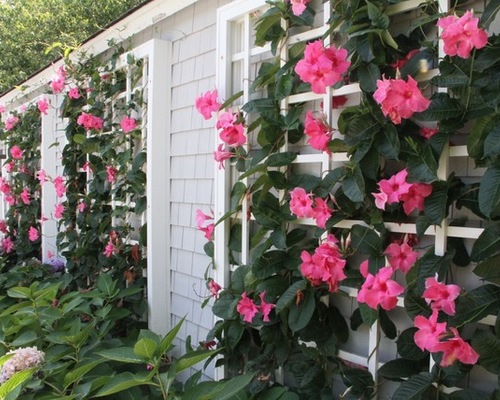Once a relatively little-known vine, mandevilla is coming into its own, thanks to a growing number of hybrids that are finding their place in home gardens. This tender perennial quickly adds color and lush greenery to a patio, deck or landscape. Even though it needs to be grown as an annual in all but the warmest warm-winter climates, its quick growth makes it an easy choice to replant year after year in colder areas.
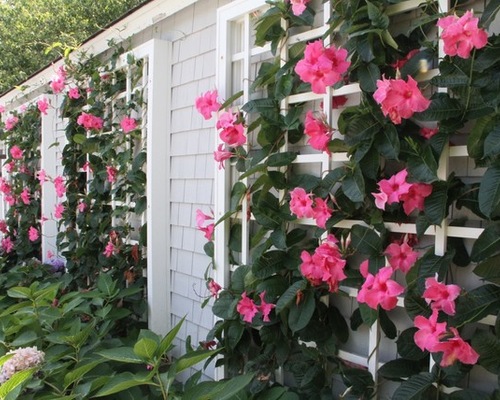

Borab Landscape Inc., original photo on Houzz
?
Caution: All parts of this plant are poisonous
Garden Statues Give Backyards Extra Flair
Sun Parasol White mandevilla (Mandevilla x ‘Sunparacoho’)
Botanical name: Mandevilla hybrids
Common name: Mandevilla
Origin: Garden hybrid; species native to the southwestern U.S., Mexico, Central America, West Indies and South America
Where it will grow: Hardy to 20 degrees Fahrenheit, or minus 6.7 degrees Celsius (USDA zones 9 to 11; find your zone); grow as an annual elsewhere
Water requirement: Regular water throughout the growing season
Light requirement: Prefers bright indirect or filtered sunlight throughout much of the day
Mature size: 15 to 20 feet tall and wide
Benefits and tolerances: Fast growing; deer resistant
Seasonal interest: Abundant flowers from summer through fall
When to plant: In spring once the soil has warmed up to at least 50 degrees Fahrenheit, or 10 degrees Celsius
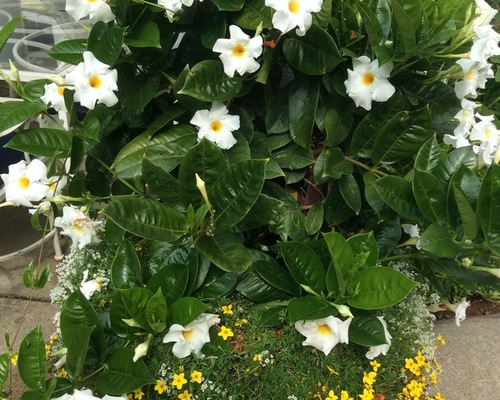

Garden Designs by Kristen, original photo on Houzz
?
Alice du Pont’ mandevilla (Mandevilla x amabilis ‘Alice du Pont’), ‘Margarita’ sweet potato vine (Ipomoea batatas ‘Margarita’) and pink petunias
Distinguishing traits. Mandevilla features showy, five-petaled and trumpet-shaped flowers from summer through fall. Pink is the most common flower color, but blooms also come in shades of white and red. Dark green leaves cover the plant, with some hybrids now sporting variegated leaves. It climbs by twining around supports.
We Wish Our Gardens Grew In These Sunrooms
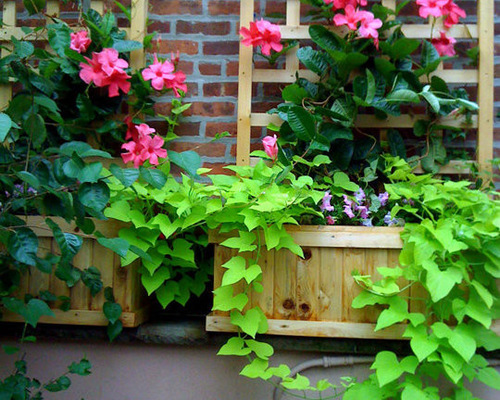

Amber Freda Garden Design, original photo on Houzz
?
‘Alice du Pont’ mandevilla, ‘Margarita’ sweet potato vine and Supertunia Flamingo petunia
How to use it. Use mandevilla to cover a trellis, wall, fence or posts. The plant also does well in a large pot, so it’s ideal for patios and decks.
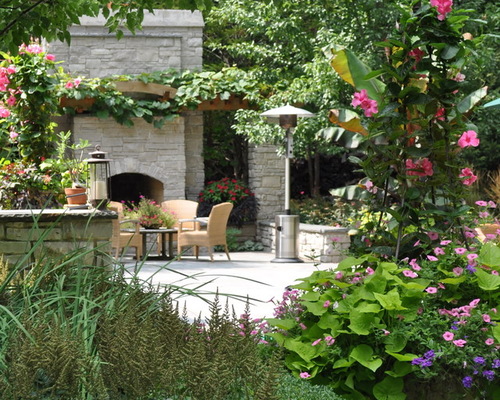

Milieu Design, original photo on Houzz
Sun Parasol Pretty Pink mandevilla (Mandevilla x ‘Sunparaprero’) and New Guinea impatiens
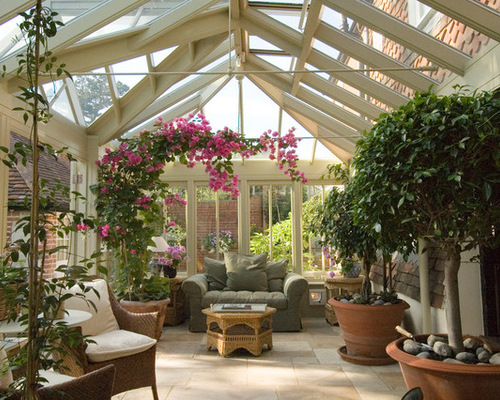

Whitmores Landscaping, original photo on Houzz
‘Alice du Pont’ mandevilla
Planting notes. Choose a warm spot in the garden with rich, well-draining soil and bright indirect or filtered sunlight throughout the day. Mandevilla likes heat, so planting it against a south- or west-facing wall is ideal if you live in a cool-summer climate. You can also use a large container, at least 20 inches wide. Provide climbing support.
Water when the soil 1 to 2 inches deep is dry. Feed with a high-phosphorus, water-soluble fertilizer, at quarter-strength, every two weeks while the plant is growing.
The most common pests are mealybugs, mites, scale and spider mites, all of which can be washed off with a strong spray of water from a hose.
Town and Country Conservatories, original photo on Houzz
If you want to try overwintering mandevilla, cut it back by half in late fall, pot it up and move it to a cool, dry, bright spot to overwinter. Prune before replanting or repotting in spring.
See Hundreds of Garden Trellises


